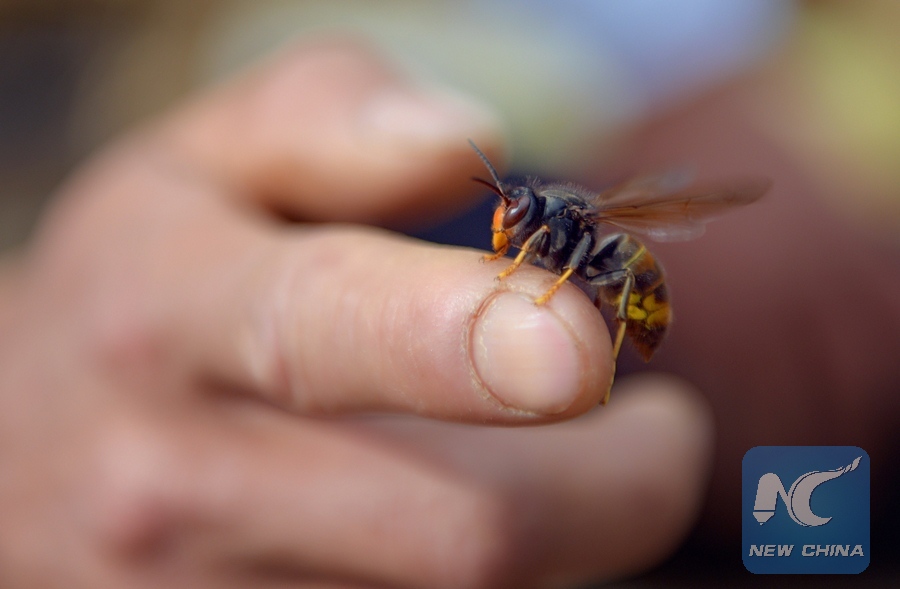
Villager Hu Min checks a queen wasp in Randahe Village of Lijiahe Town in Xuan'en County, Enshi Tujia and Miao Autonomous Prefecture, central China's Hubei Province, April 8, 2018. (Xinhua/Song Wen)
WASHINGTON, Dec. 8 (Xinhua) -- American researchers have transformed toxin in wasps into potential antibiotic drugs that may eliminate hard-to-cure bacterial infections.
In a study published in this week's Nature Communications Biology, the researchers from Massachusetts Institute of Technology created peptides that are potent against bacteria but nontoxic to human cells.
They are variants from a peptide toxin normally found in a South American wasp which can kill bacteria, according to the study.
In the study of mice, the strongest peptide variant could completely eliminate a strain of bacteria that causes infections resistant to most antibiotics.
"We've repurposed a toxic molecule into one that is a viable molecule to treat infections," said Cesar de la Fuente-Nunez, an MIT postdoc.
"By systematically analyzing the structure and function of these peptides, we've been able to tune their properties and activity," said de la Fuente-Nunez, the co-senior author of the study.
The venom-derived peptide is believed to kill microbes by disrupting bacterial cell membranes, according to the study.
The researchers exposed peptide variants to human embryonic kidney cells grown in a lab dish and they selected the most promising compounds to test in mice infected with Pseudomonas aeruginosa, a common source of respiratory and urinary tract infections, and found that several of the peptides could reduce the infection.
One of them, given at a high dose, could eliminate it completely, according to the study.
"After four days, that compound can completely clear the infection, and that was quite surprising and exciting because we don't typically see that with other experimental antimicrobials or other antibiotics that we've tested in the past with this particular mouse model," said de la Fuente-Nunez.

